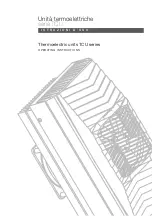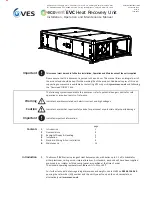
MTU-GLR Maintenance
19
Anthony Liftgates, Inc.
800-482-0003
www.anthonyliftgates.com
6. Welding Stainless Steel to Galvanized
If the installation requires welding galvanized steel parts
to stainless steel, special procedures must be followed
to ensure the safety of the welder and the integrity of the
welds.
6.1 Safety
6.1.1 Welding or Grinding Galvanized Material
CAUTION
Follow all OSHA and other workplace safety standards
when welding galvanized steel, which creates zinc
oxide fumes. Always grind the coating off in the area
to be welded and provide adequate ventilation to
avoid breathing the fumes.
Always wear proper breathing protection when
grinding or welding. Use ventilation or vacuum
systems to remove any contaminated air from the
work area.
Metal Fume Fever:
When zinc vapor mixes with the oxygen in the air,
it reacts instantly to become zinc oxide, which is
non-toxic and non-carcinogenic.
Zinc oxide that is inhaled is absorbed and
eliminated by the body without complications or
chronic effects.
Exposure to zinc oxide fumes causes a flu-like
illness called metal fume fever.
Symptoms include headache, fever, chills,
muscle aches, nausea, vomiting, weakness, and
tiredness.
There are no long-term health effects. Metal fume
fever typically begins about four hours after
exposure, and full recovery occurs within 48
hours.
6.1.2 Welding or Grinding Stainless Steel
Follow all OSHA and other workplace safety standards
when welding stainless steel, which creates hexavalent
chromium fumes that can irritate the nose, throat, and
lungs.
Repeated or prolonged exposure can damage the
mucous membranes of the nasal passages and
result in ulcers. In severe cases, exposure causes
perforation of the septum (the wall separating the
nasal passages).
Always wear proper breathing protection when
grinding or welding. Use ventilation or vacuum
systems to remove any contaminated air from the
work area.
6.2 General Guidelines
1. Welders should position themselves upwind of the
airflow that removes the fumes so that fumes and
dust do not collect inside the welding shield (helmet).
2. In addition to proper positioning, an effective method
to prevent inhaling zinc oxide fumes or hexavalent
chromium fumes is to wear a good fume-rated
respirator.
6.2.1 Weld Wire
We recommend AWS E312T1 flux core wire, such as
Midalloy Mastercor™ E312T1-1/4 or equivalent.
Do not use stainless steel weld wire.
6.2.2 Shielding Gas
100% CO
2
or 75/25 Argon/CO
2
mix can be used.
6.2.3 Welding Guidelines
1. The welding of galvanized steel is the same as
welding bare steel of the same composition. It uses
the same welding processes, Volts, amps, travel
speed, etc.
Wire
Diameter
(inches)
Voltage
(V)
Amperage (Amp)
[Wire Feed Speed (ipm)]
Flat
Vertical & Overhead
.045
24-28
130-200 [250-425]
120-160 [225-300]
.062
25-30
180-250 [150-250]
180-220 [150-200]
2. Use a soft disc grinder to remove the galvanized
coating in the area to be welded. This will improve
weld quality and reduce the welder’s exposure to zinc
oxide fumes.
3. No preheating of the dissimilar metals is needed.
4. When welding is complete, and after the area has
cooled, use a cold galvanizing spray to restore
corrosion resistance.
Summary of Contents for MTU-GLR Series
Page 2: ......
Page 23: ...NOTES...






































